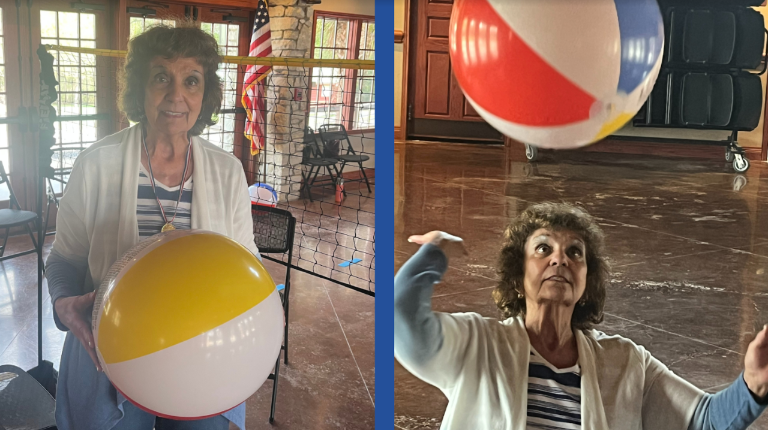To describe Vita Malloy as an active 81-year-old would be an understatement. The self-described “Energizer Bunny” plays seniors’ volleyball for 3 to 4 hours at a time, multiple days a week. “I'm not going to play for just an hour. I like to play for three hours or so,” she insists.
But when Vita began experiencing shortness of breath, the Spring, TX resident knew something was seriously wrong.
She immediately made an appointment with Cardiologist Vincent Aquino at St. Luke’s Health – The Woodlands, who diagnosed severe aortic stenosis, which was significantly restricting blood flow out of her heart resulting in exertional shortness of breath, chest pressure, and tightness.
Aortic stenosis is a progressive condition that worsens over time. Vita began feeling so weak she could barely walk. “I was afraid to do anything,” she recalls.
Interventional Cardiologist Robert Aertker and Cardiac Surgeon Mark Mettauer, both at St. Luke’s Health – The Woodlands, felt Vita would be a candidate for Transcatheter Aortic Valve Replacement (TAVR). Drs. Aertker and Mettauer work together during the minimally invasive procedure that uses a catheter to deliver a stent to the aorta via a small incision in the groin. Once it reaches the heart, the stent expands and widens the narrowing artery.
Prior to the development of TAVR, the only option was open heart surgery during which surgeons would resect the old valve and surgically replace it with a new one, resulting in a long and difficult recovery. TAVR is so well tolerated by patients, it is now being used in about 90 percent of cases, Dr. Aertker said. In fact, St. Luke’s Health – The Woodlands recently performed its 200th TAVR including many patients in their 80’s and 90’s.
The St. Luke's Woodlands TAVR program boasts excellent outcomes which outshine national benchmarks for quality. To date, the hospital has now completed over 200 TAVR's without a single operative mortality or need for conversion to an open-heart surgery.
For every TAVR that is performed at the hospital, a multidisciplinary heart team, including interventional cardiologists, echocardiographers, and cardiac surgeons, perform an extensive workup to confirm TAVR is the best treatment option. “Every patient undergoes coronary angiograms, a CT scan of the chest, abdomen, and pelvis, and carotid ultrasounds to make sure that the patient is anatomically a good candidate. Patient selection is key to ensure optimal outcomes,” Dr. Aertker explained.
The TAVR procedure takes about 45 minutes. Patients are kept overnight in the hospital and 95% go home the next day. They are restricted from heavy lifting for a week. “Pain is rarely an issue, except for temporary soreness in the groin area,” Dr. Aertker said.
Vita bounced back quickly. "The day after I was discharged, I walked around [my neighborhood] four times without stopping. Before the procedure, it had gotten to the point that I would have to stop and keep breathing and breathing. Now, I just zoom around without stopping.”
Vita is back to playing seniors volleyball, walking, exercising and manages to fit in a few hands of Canasta in between. “My doctors and nurses were great. I feel like a new person since the procedure," she insists.




